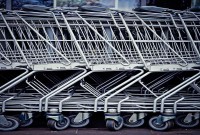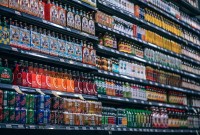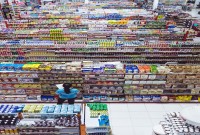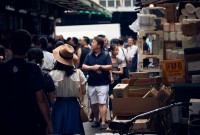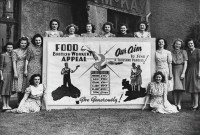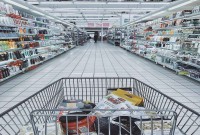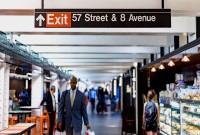- Home
- Business Processes
- Industry Knowledge
- Aerospace Industry
- Automotive Industry
- Banking Domain
- BFSI Industry
- Consumer/ FMCG Industry
- Chemicals Industry
- Engineering & Construction
- Energy Industry
- Education Domain
- Finance Domain
- Hospitality Domain
- Healthcare Industry
- Insurance Domain
- Retail Industry
- Travel and Tourism Domain
- Telecom Industry
- Leadership Skills
- eLearning
- Home
- Domain Knowledge
- Consumer/ FMCG Industry
- Competitive Landscape of Retail Industry
Competitive Landscape of Retail Industry
In an increasingly competitive landscape, retail industry players must compete in a number of ways. In this article, we will learn about the competitive landscape of the retail industry. Learn the key players in the retail industry and their business profile. Learn more about the top 5 industry players. Competition is rough, especially for the small business. Knowing how business stacks up to the competition is important to your business strategy.
The Top 10 retailers have a large geographic footprint and these large retailers operated on average in 16.7 countries. Most of them are facing challenging economic conditions in local markets and they are constantly seeking growth opportunities overseas in countries with stronger economic conditions and growth prospects. Given below are the five largest retailers in the world:
1. Wal-Mart Stores Inc (USA):
Wal-Mart Stores, Inc., branded as Walmart, is an American multinational retail corporation that runs chains of large discount department stores and warehouse stores. Wal-Mart was established in the 1960s. The company was founded by Sam Walton in 1962, incorporated on October 31, 1969, and publicly traded on the New York Stock Exchange in 1972. It is headquartered in Bentonville, Arkansas.
It provided goods at very low prices by buying in bulk and developing very efficient logistics. Wal-Mart runs a worldwide chain of large discount department stores, supermarkets, and hypermarkets. In the late 1980s and early 1990s, the company rose from a regional to a national giant. By 1988, Wal-Mart was the most profitable retailer in the US and by 1990 it had become the largest in terms of revenue. Over the years Wal-Mart grew exponentially and has become the largest retailer in the world.
Walmart has 8,500 stores in 15 countries, under 55 different names. The company operates under the Walmart name in the United States, including the 50 states and Puerto Rico. It operates in Mexico as Walmex, in the United Kingdom as Asda, in Japan as Seiyu, and in India as Best Price. It has wholly-owned operations in Argentina, Brazil, and Canada.
In 2010, Wal-Mart had revenues of $421.849 billion. Its operating income was $25.542 billion and total assets were $180.663 billion. Wal-Mart accounted for more than 10 percent of the total Top 250 Global Retailer’s revenue, acquired South Africa’s Massmart in June 2011, its biggest deal in more than a decade. This will allow Wal-Mart to widen its lead over its top 10 rivals in the future. Wal-Mart employs approximately 2,100,000 people.
2. Carrefour Group (France):
Carrefour means "crossroads" and "public square" in French. Carrefour S.A. is a French multinational retailer headquartered in Boulogne Billancourt, France, in Greater Paris. Carrefour opened its first store in Annecy, France in 1957. The company grew from a single store into a chain of stores, merging with Promodè in 1999. Carrefour's stores include supermarkets, hypermarkets, and discount and convenience stores. It is one of the largest hypermarket chains in the world (with 1,452 hypermarkets at the end of 2011, the second largest retail group in the world in terms of revenue, and the second in profit (after Wal-Mart).
Carrefour operates mainly in Europe, Argentina, Brazil, China, Dominican Republic, United Arab Emirates, Qatar, and Saudi Arabia, but also has shops in North Africa and other parts of Asia, with most stores being of a smaller size than a hypermarket or even supermarket. In 2010, Carrefour had revenues of $125.185 billion USD and an operating income of $2.55 billion. It employs over 471,000 people.
3. Tesco PLC (UK)
Tesco PLC (LSE: TSCO) is a British multinational grocery and general merchandise retailer headquartered in Cheshunt, Hertfordshire, England, United Kingdom. It’s a British-based international grocery and general merchandising retail chain. It is the second-largest retailer in the world measured by profits (after Wal-Mart) and the third-largest retailer in the world measured by revenues (after Walmart and Carrefour).
Its products include groceries, consumer goods, financial services, and telecoms. Tesco has increasingly diversified geographically and into areas such as the retailing of books, clothing, electronics, furniture, petrol and software; financial services; telecoms and internet services; DVD rental; and music downloads. It has stores in 14 countries across Asia, Europe, and North America and is the grocery market leader in the UK (where it has a market share of around 30%), Malaysia, the Republic of Ireland, and Thailand. In 2010, Tesco had revenues of $97.204 billion USD. Its operating income for that period was $6.078 billion. It had a market capitalization of approximately £24.4 billion as of 15 January 2012. Tesco employs approximately 472,000 people.
4. The Kroger Co (USA)
The Kroger Company is an American retailer founded by Bernard Kroger in 1883 in Cincinnati, Ohio. It reported $96.8 billion in sales for the fiscal year 2012. It is the country's largest grocery store chain, its second-largest general retailer by revenue, and fourth-largest retailer in the world (surpassing Germany-based Metro AG in 2012), according to Deloitte. As of 2010, Kroger operated, either directly or through its subsidiaries, 3,574 stores.
Kroger's headquarters are in downtown Cincinnati. It maintains markets in 31 states, with store formats that include supermarkets, superstores, department stores, convenience stores, and mall jewelry stores. Kroger-branded grocery stores are located throughout the Midwestern and Southern United States. Kroger also is a parent to several "banner" chains, such as Ralphs in California.
Kroger is a union company. Seventy-five percent of Kroger employees are represented by the United Food and Commercial Workers (UFCW).
5. Metro AG (Germany)
Metro AG, otherwise known as Metro Group, is a German global diversified retail and wholesale/cash and carry group based in Düsseldorf, Germany. Metro AG Company was established in 1964. It has the largest market share in its home market and is one of the most globalized retail and wholesale corporations. It is the fifth-largest retailer in the world measured by revenues (after Wal-Mart, Carrefour, Tesco, and Kroger).
It has establishments in Europe, Asia, and Africa, including supermarkets, hypermarkets, and electronics, appliance, and department stores. Metro AG had revenues of $93.45 billion USD in 2010. As of 2012, the Metro Group operated stores in 25 European countries, 5 Asian countries, and 1 in Africa. Its operating income for the same year was $3.07 billion and it employed 283,280 people.
Related Links
You May Also Like
-
Retail Industry: Strategies for overcoming challenges
To stay competitive in this ever-evolving landscape, it is imperative for retailers to deliver a seamless customer experience and provide the right services and products at the right time. Learn the strategies for overcoming challenges for the retail industry. Retailers must use technology and solutions to revive their businesses in the COVID-19 world. An omnichannel marketing strategy can help retailers reach a wider audience for their brands.
-
The retail value chain defines a series of actions that enable businesses to sell their products to customers. Value Chain for any industry describes how an industry is structured and its methods for maximizing revenues. Learn the value chain of the industry. Learn about the key partners, key activities, cost structures, and revenue streams of the retail sector. The value/supply chain analysis reveals the business activities which comprise the movement of retail goods.
-
Business Dynamics of Consumer Industry
The consumer goods industry is impacted by many dynamics like economic considerations, product considerations, price considerations that impact consumer buying choices. Advertisements, branding, marketing, variety of goods, and technology are the main drivers. Manufactures, retailers, warehousing, and logistics are all part of the supply chain for the consumer goods industry.
-
From an economic standpoint, there are three main types of consumer goods: durable goods, nondurable goods, and services. For marketing purposes, consumer goods can be grouped into different categories based on consumer behavior, how consumers shop for them, and how frequently consumers shop for them. One of the largest consumer goods groups is called fast-moving consumer goods. This segment includes nondurable goods like food and drinks that move rapidly through the chain from producers to distributors and retailers than on to consumers.
-
Competitive Landscape of Retail Industry
In an increasingly competitive landscape, retail industry players must compete in a number of ways. In this article, we will learn about the competitive landscape of the retail industry. Learn the key players in the retail industry and their business profile. Learn more about the top 5 industry players. Competition is rough, especially for the small business. Knowing how business stacks up to the competition is important to your business strategy.
-
Retail Industry - Business Model
A retail business model articulates how a retailer creates value for its customers and appropriates value from the markets. In retail, a business model would dictate the product and/or services offered by the retailer, the pricing policy that he adopts. Many different types of retail establishments exist, and, the overall industry has seen a significant blurring of the boundaries that separated the wide range of retail businesses. Understand the key business models adopted by the retail industry. Understand the distinctive ways that retail industry players use to reach to the end consumer.
-
Retail Industry: Revenue Model
Understand the traditional retail revenue model and, what are the variations in different revenue models adopted by key players in the retail industry. Analyze the pros and cons of various models. The most common and most profitable revenue model is that of the traditional retailer. The traditional retailer profits by selling products and services directly to buyers at a mark-up from the actual cost.
-
Retailing is the combination of activities involved in selling or renting consumer goods and services directly to ultimate consumers for their personal or household use. In addition to selling, retailing includes such diverse activities as, buying, advertising, data processing, and maintaining inventory. This article explains the meaning of retail and its etymology. Understand the meaning and constituents of the retail industry and the role it plays in the economy of any nation.
-
Retail Industry: Key Performance Metrics
You cannot manage what you do not measure and cannot measure what you do not define. Learn the key performance metrics for the retail industry like Sales per square foot, Gross margins return on investment, Average transaction value, Customer retention, Conversion rate, Foot traffic, and digital traffic and Inventory turnover, etc. These metrics are used across the globe by key industry players to track and improve their performance.
-
Durable goods are consumer goods that have a long life span (e.g. 3+ years) and are used over time. Highly durable goods such as refrigerators, cars, or mobile phones usually continue to be useful for three or more years of use, and hence durable goods are typically characterized by long periods between successive purchases.
Explore Our Free Training Articles or
Sign Up to Start With Our eLearning Courses

About Us
Learning
© 2023 TechnoFunc, All Rights Reserved

